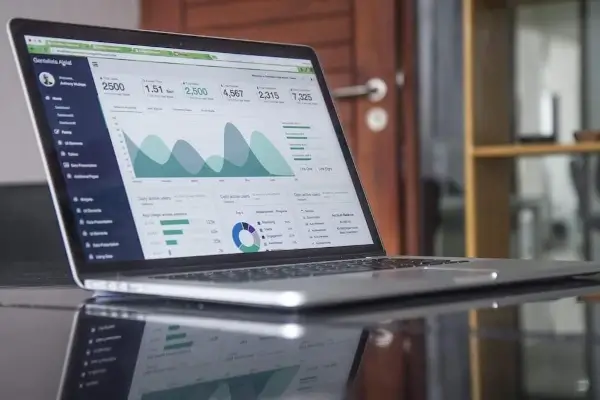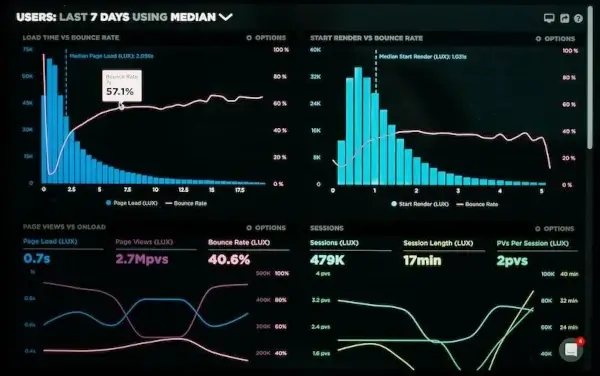
In the modern world, few things are as important for a business as its website. That's because websites are the main interface through which customers tend to interact with your brand and the main location at which customers make orders. For other types of business, websites are the primary point of communication between clients and employees.
That huge level of importance brings with it a huge sense of vulnerability. After all, any successful cyberattack on your website will put your entire business — and with it, jobs and livelihoods — at risk. You also have a responsibility to your customers and clients to protect their data and sensitive information.
Therefore, you must ensure that your website is secure and well-protected. One of the best ways to achieve this is through conducting regular website security audits.
However, completing a website security audit can be difficult if you've never audited the cybersecurity of a website before. That's why we've compiled this step-by-step guide to website security audits. Read on to find out more.
What Is a Website Security Audit?
You've probably come across the concept of an audit in cybersecurity before, whether that's an internal controls audit or a regulatory compliance audit. A website security audit is a more holistic check that examines every aspect of your web system for security flaws.
It aims to examine all of the key elements that make up a website, from its files and plugins to its server. It will look for loopholes that hackers could use to access the data stored on your website and will root out any vulnerabilities in your code or security architecture.
Often, a website audit will use a combination of automated tools and human monitoring. There are several different website security audit solutions that you can utilize to automate the process. However, you could also complete a security audit if you have a competent and professional IT team that you can rely on.
Why Are Website Security Audits Important?

The importance of website security audits can't be understated. Every business needs to ensure that their website is secure, with small business cybersecurity especially important as they come under increasing attack from cyber criminals.
Ultimately, a website security audit is all about reducing risk. By spotting weaknesses in the infrastructure of your website, you'll be minimizing the chances of a cyberattack.
On top of this, it is a crucial part of protecting customer data, which is a great way of building trust with your customers. It's also necessary to ensure compliance with privacy regulator website regular website security audits, leaving your website especially vulnerable to attacks. It's the equivalent of leaving your front door unlocked when you leave the house! Improving your security is at the core of every website security audit.
How to Conduct a Website Security Audit
The importance of a website security audit should now be evident. But how exactly can you start to conduct website security audits in your business? Here are our seven key steps for conducting a website audit:
1. Set Out Your Scope and Aims
Before you start looking under the hood of your website, you need to work out what exactly you'll be auditing. You should always start by outlining the scope and aims of your audit.
Choose a focus by honing on an aspect of your website that needs to be prioritized, whether that's your data handling, user authentication, or server performance. For instance, a healthcare platform may narrow its focus to audit user access to patient records, aiming to bolster confidentiality protocols.

On the other hand, a blogging website might look to check the security of an optimization tool it uses as part of the website infrastructure. Clearly outlining your scope in this way will let you produce desired outcomes and ensure that your audit remains focused. Moving across your site in this strategic way will then make sure that your whole website is secure.
2. Complete a Vulnerability Assessment
The next step in any website security audit should be completing a thorough vulnerability assessment. This involves categorizing potential security risks, whether outdated software versions in a content management system or unpatched plugins. You should look for any vulnerabilities across your infrastructure, including your cloud systems and third-party providers.
If you can assess these vulnerabilities, you'll know what potential entry points cyber attacks could exploit. This is a crucial step in closing off your website to potential cyber criminals, as only now will you be able to take steps actually to shut down these vulnerabilities.
There is a huge range of tools that you can use to scan your website for these vulnerabilities automatically. These pieces of software will ensure that nothing on your website will go untouched.
Note: It's essential to research before choosing any third-party tool that will access your systems.
3. Run a Security Scan
Once you've searched for any apparent vulnerabilities in your website infrastructure, you should run a security scan. These are proactive measures utilizing automated tools to identify weaknesses in code, configurations, and network settings. This will let you uncover any evolving threats working away at your website.
Third-party tools can be used to scan for these security threats. Often, these tools will give your website a security score so that you can have something to aim for as you improve the security of your site after the audit is complete.
4. Review Your Site Settings

Optimizing your site settings for security is a fundamental step in the audit process. This means that you must meticulously examine access controls, permissions, and authentication processes to ensure that only authorized individuals have access to sensitive areas of the website.
This will also include looking at your information security management system (ISMS). An example of ISMS that is effective would include clear policies about your site settings and how they are set up to protect and safeguard customer and employee data.
The extent to which your site settings must be reviewed will depend on your specific context. For instance, a healthcare portal might require multi-factor authentication to enhance security for accessing confidential medical information.
5. Check Data Protection and Communication
Data privacy is a crucial part of any website audit. It's, therefore, vital that you devote a part of your audit to it in particular. You'll need to comprehensively evaluate how the website handles data and communication. Scrutinize your encryption methods, secure communication protocols, and compliance with privacy regulations.
This is important because data protection is a heavily regulated area of any industry. Compliance with regulations such as GDPR or CCPA is necessary to avoid fines, court cases, and loss of trust with your customers.
Without checking how your website handles data protection and how this data is communicated, you're potentially leaving your customers' sensitive information out in the open for hackers or cyber criminals to exploit in data breaches easily.
6. Assess Traffic and User Accounts
Many cyber attacks come in the form of unusual traffic patterns, particularly DDoS attacks, while malware attacks can result from bad actors accessing user accounts. This means that a crucial aspect of the audit process is the evaluation of website traffic patterns and the monitoring of user account activities.

You'll have to look out for anomalies that may indicate malicious behavior and ensure that only authorized individuals have access to the website. Check for visitors that come from blacklisted sites and make sure that any big spikes or drops in traffic have been investigated. These can be sure signs of a cyber attack.
These checks can be completed as part of a general fuzzing strategy. The sort of tools that you used earlier for your vulnerability assessments and security scans may also include this functionality.
7. Document Your Findings — And Repeat
The final step in any successful website security audit has to be documentation of your audit results. This is essential when it comes to accountability — detail any discovered vulnerabilities and outline the actions you're taking to rectify them.
This documentation is a crucial tool for future website security audits, as you'll be able to check that your rectifying measures are actually acting as intended.
It is important to note that you absolutely must complete future audits. Repeating this process is a crucial part of ensuring that your website remains secure. Cyber threats are constantly evolving, so you need to adapt to these constant changes.
Website Security Audits — The Path to Effective Cybersecurity

Your website is simply too important to leave unprotected. That's why conducting regular security audits of your site is imperative. Without these audits, you're leaving your website open to cyberattacks and data breaches.
By following our step-by-step guide to auditing your site, you can be confident that your website's vulnerabilities have been identified and can be closed off. You'll also be confident of compliance with privacy regulations.
However, it's crucial that you keep repeating the process. Now that you know how to conduct a website security audit, that will be easier than ever!


 Copyright 2000-2025, WebSitePulse. All rights reserved.
Copyright 2000-2025, WebSitePulse. All rights reserved.